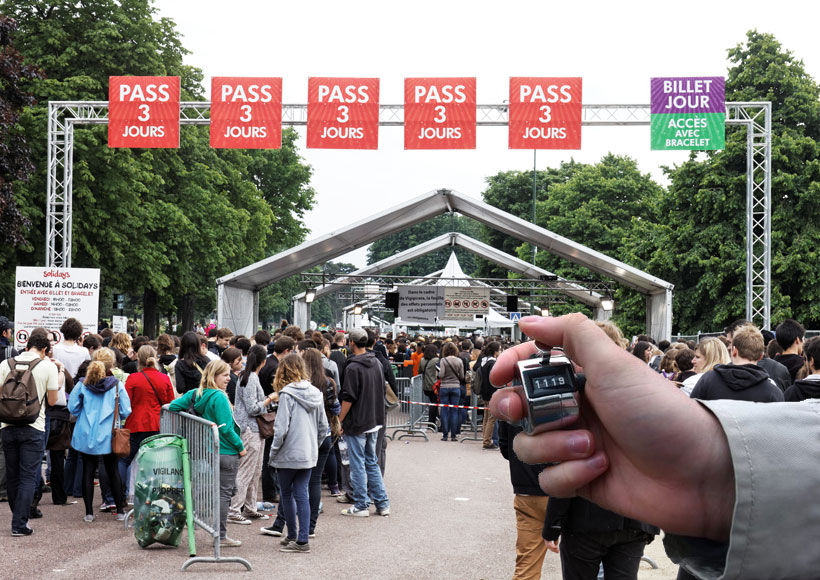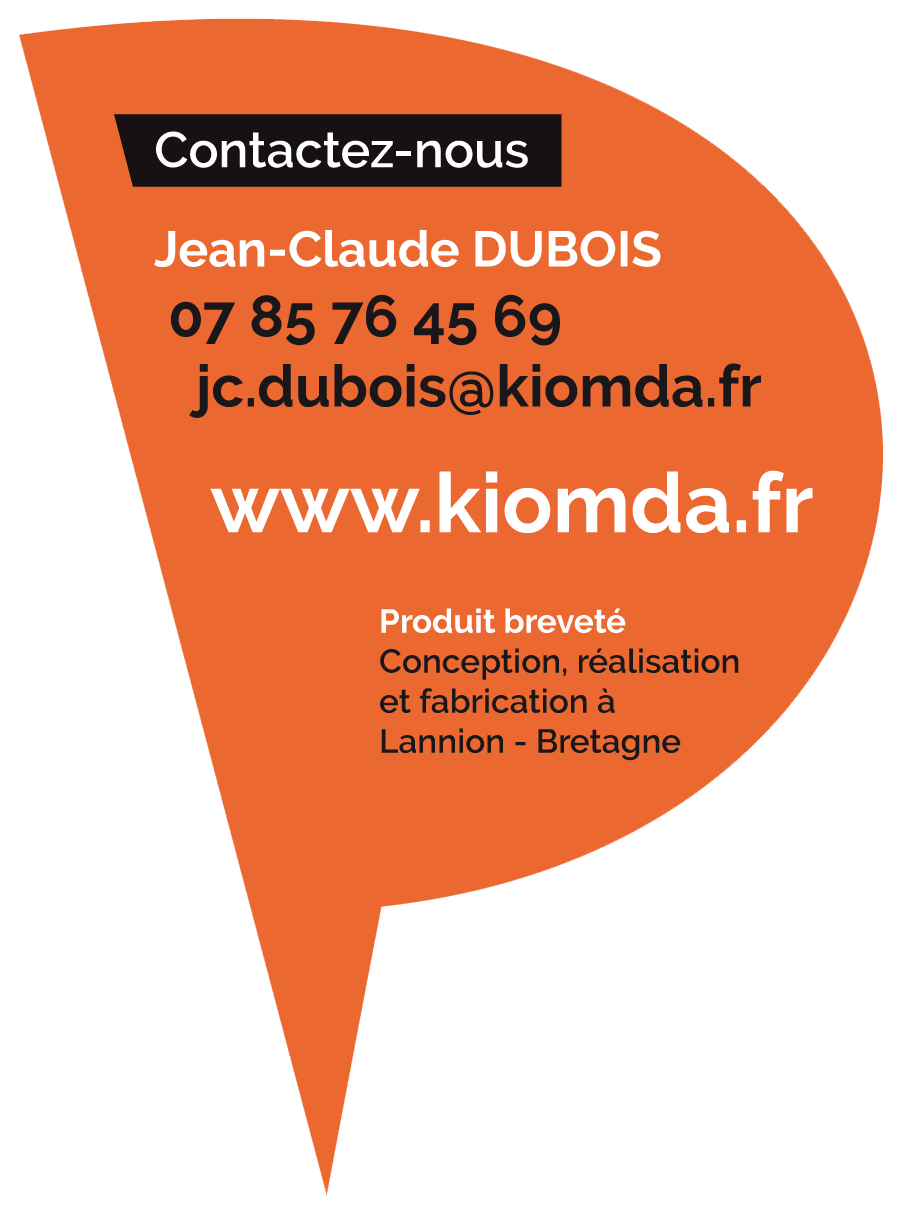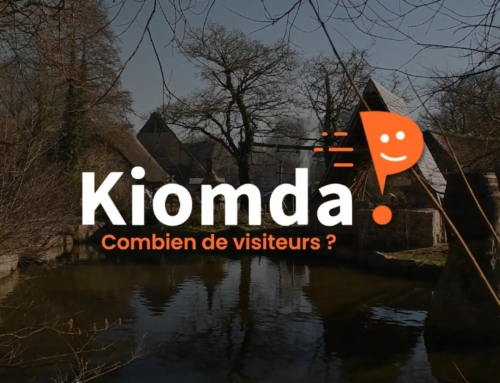When you're an event organizer and you want to make your events last, one of the main needs is to be able to count the number of participants. This can quickly become a complicated task, especially for outdoor events with several entrances.
Clearly, our needs are simple. To have figures that tell us not only how many people are coming and going, but also where the peaks are. To have usable, reliable results, especially when we're accountable. And above all, to be able to obtain them in simple, budget-friendly ways.
And that's where things get complicated... Let's take a look at the solutions available to us.

Approximate solutions for counting your visitors
I - Estimation :
It can take many forms. The pifometer, which although often accurate, is by no means factual. It's the rule of three: count for an hour and then multiply by the number of opening hours, etc. These are solutions that help out, but the figures obtained cannot be reliable.
II - Manual counting :
Sometimes it's possible to have volunteers stationed all day at each entrance, equipped with manual click counters. They can also be placed at the parking lots and asked to count the number of vehicles. Apart from the daunting aspect of the task, these results will also be unreliable due to the variable involvement of the volunteer. The figures obtained will be better than a simple estimate, but this method offers no insight into peak traffic. It cannot be generalized to events with several entrances or spread over several days.
III - Revenue analysis :
Charging admission would be a good solution. But it's not always a winning strategy, especially when you want to attract a lot of people. Another way of gauging attendance would be to look at the number of drinks consumed at the refreshment stands. But here again, the influence of the weather, the time of year, the child/adult ratio... makes these figures purely estimative.
just don't deliver reliable, accurate results.
Perhaps technological solutions would be more appropriate.
Let's take a look at what's being done.
Visitor counting technologies
IV - The drone :
This little device can take a photo or video view of the event. This makes for a reliable and accurate count, but can be complicated if the event is particularly spread out or crowded. The result is also limited to the time the device is in use. Over and above the safety aspect and the regulations prohibiting overflight of the public without explicit consent of the danger involved, this method only provides an instantaneous count.
V - Automatic sensors :
These sensors can be very useful, as nothing escapes their attention for the duration of the event. They can be used to draw up detailed attendance reports, which can then be used as factual data when it comes time to take stock.
In this family of solutions, the choice is wide...
- Video counting: The camera must be positioned 2.5m above the ground, in the middle of the passage zone. This solution requires the sensor to be configured, and above all a power supply, as the sensor requires a lot of energy. Subject to these constraints, the camera counts everything that moves along a virtual line, and counts can be very accurate as long as people don't leave the viewing area.
- Stereo counting: This sensor uses 2 cameras spaced a few tens of cm apart, and reconstructs a 3-dimensional veil of the filmed scene. Installation constraints and limitations are identical to those of video counting. Counting accuracy is very good in the 3D filmed area.
- Thermal counting: Here again, the principle is similar to video counting, but the sensor used is a thermal camera similar to those used for home thermal diagnostics. It's an effective sensor because the audience to be counted generates a thermal trace that's easy to identify. It is this principle that is used for military applications, as it is insensitive to variations in lighting.
- Active infrared counting: this works with a transmitter/receiver sensor that sends signals which are reflected by a reflector placed on the other side of the passage zone. If a person passes, reception is cut off and a count is added. This highly directional sensor is highly sensitive to masking and does not indicate the direction of passage. For this system, we recommend relatively narrow passages with no attractive elements to avoid stagnation. It's easy to install, as it doesn't need to be high up.
- Thermal infrared counting: Kiomda units use this counting method. The main technical advantage lies in the sensor's miniaturization and total energy autonomy. It's a counting solution that requires neither parameterization nor a power supply. Thanks to a Fresnel lens, several thermal pixels monitor a passage zone and identify thermal peaks to count passages in both directions.
The figures are factual! They can be easy to obtain...
Whatever counting method you choose, there are some simple rules to follow:
- Count on each of your entrances or, failing that, your main entrances. The more entry points you have, the more people will be present and counted.
- You need to count for the entire duration of your event. The more days you're open, the higher the figures.
- Counting locations should be as narrow as possible in areas where traffic flows freely. Counting accuracy always depends on counting width:
+ 1m width: +/- 5%.
+ 3m width: +/- 10%.
+ 6m width: +/- 20%. - In order to obtain a reliable estimate of the number of people present, it is necessary to separate the input and output zones, as it is necessary to cancel out directional errors.
- Multiplying the number of counting points ensures a good cross-referencing of figures, and thus helps to identify and cancel out counting errors.
- Keep it simple! Installing the metering system must be quick and easy.

